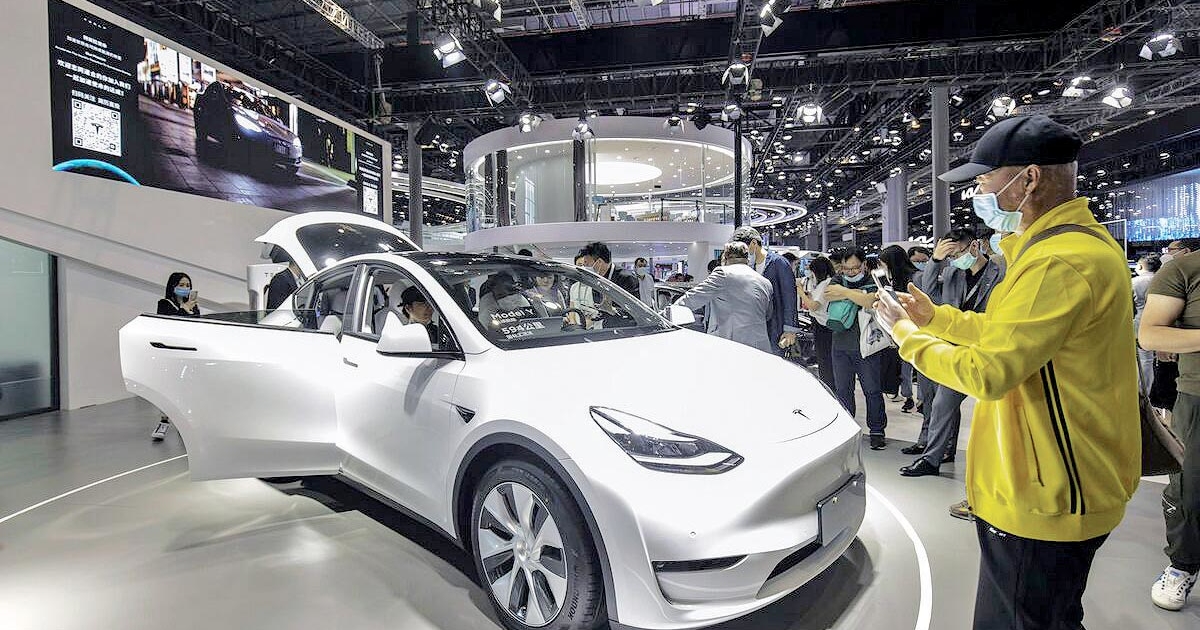
Like many of you, I’ve been struggling of late to wrap my head around this nation’s EV market and where it’s heading. The latest registration data from Experian hasn’t made it any easier to ascertain.
But if I had to guess, I think what we are seeing is an unnatural market, instead of just an immature one.
The Experian data in a nutshell:
- Registrations of new electric vehicles — a proxy for sales — are up.
- Demand is up.
- The inventory of EVs is up, and now is over 100 days’ supply, according to Cox Automotive.
- Prices are up, except where they’re down. Tesla’s $18,000 slice off the Model Y starting price fueled a huge sales bump, while Ford cut the sticker price of its Mustang Mach-E by up to 7 percent in May and the F-150 Lightning by as much as $10,000 last week.
EVs as a percentage of light-vehicle registrations are up, now representing 7 percent of the market, compared with 4.6 percent just a year ago. New EV registrations rose by a healthy 68 percent in the January-to-May period to a record 447,514 vehicles, but Experian noted that about half of the increase came solely from Tesla, which continues to vacuum up EV market share.
If you look only at the top line, the EV market might appear pretty rosy, but I’m skeptical.
Legacy automakers continue to wade deeper into the EV pool, pushed by their investor-aimed promises to eventually abandon internal combustion engines in the next decade or so. Chevrolet was the second-biggest EV seller in January-May, according to Experian, but was led by a nameplate — the Bolt — that’s going away. Ford grabbed the No. 3 spot, but its rate of sales growth in the segment has slowed dramatically.
Among the brands I cover, traditional powerhouse Japanese partners Toyota and Subaru sold a paltry 7,748 copies of the Toyota bZ4X, Lexus RZ450e and Subaru Solterra between them in that five-month period, after the bZ4X’s and Solterra’s troubled launches in 2022.
Volkswagen this month reported that it nearly quadrupled the number of ID4 compact crossovers it had sold in the U.S. in January-May, but the 16,448 sales accounted for 11 percent of the brand’s total sales during the period. You would think posting those kinds of numbers would be great, but in some regions of the country, ID4s are starting to stack up on dealership lots, and dealers tell me they’re running out of interested buyers.
Why is the EV market unnatural? With states’ zero-emission vehicle mandates and Byzantine federal EV tax incentives, battery pricing pressures and advances in energy density engineering, the EV market just isn’t going to behave in the paradigm that ICE-powered autos have created over much of the last century. The traditional rules of supply and demand don’t seem to apply.
Consider pricing: Automakers traditionally have built enough profits into their wholesale costs to fund incentives if a vehicle’s sales performance declines. But when there’s no wholesale margin to begin with because battery mineral prices are rapidly rising with increased EV production, any room to turn to discounts disappears when the metal stops moving. That leaves dealers sitting on inventory waiting for a buyer, and weighing whether to sell the EV at a loss to get it off the floorplan expense.
To be sure, not everyone is suffering equally, or suffering at all, frankly. Tesla for one seems to have mastered how to navigate this confusing pool, while the legacy automakers and their dealer networks are themselves just learning to swim there. Things could still change, and consumer reluctance to jump to EVs may lessen as charging infrastructure grows in number and stability.
But until that point, these EV waters remain hazardous to all who try to traverse them.